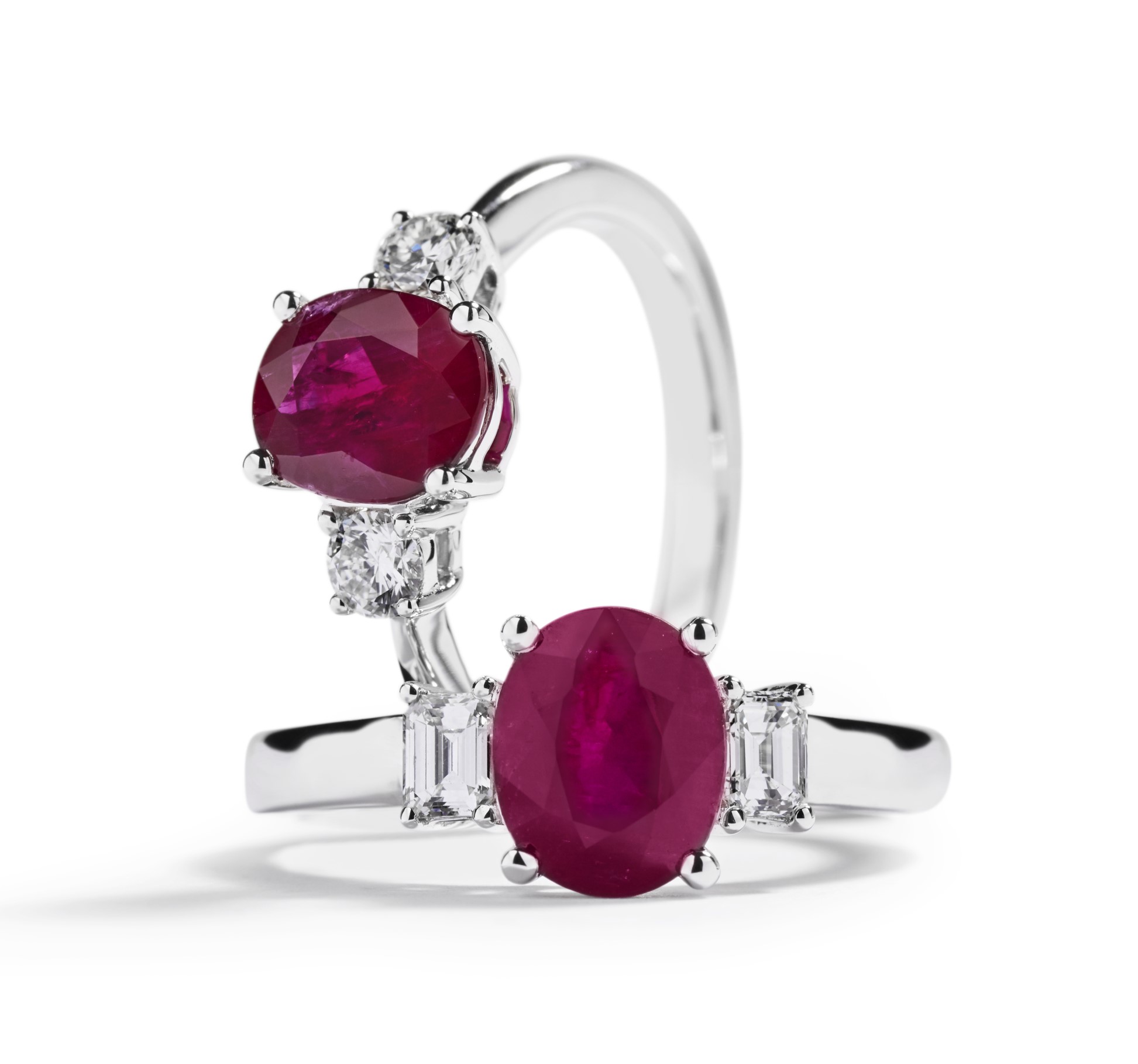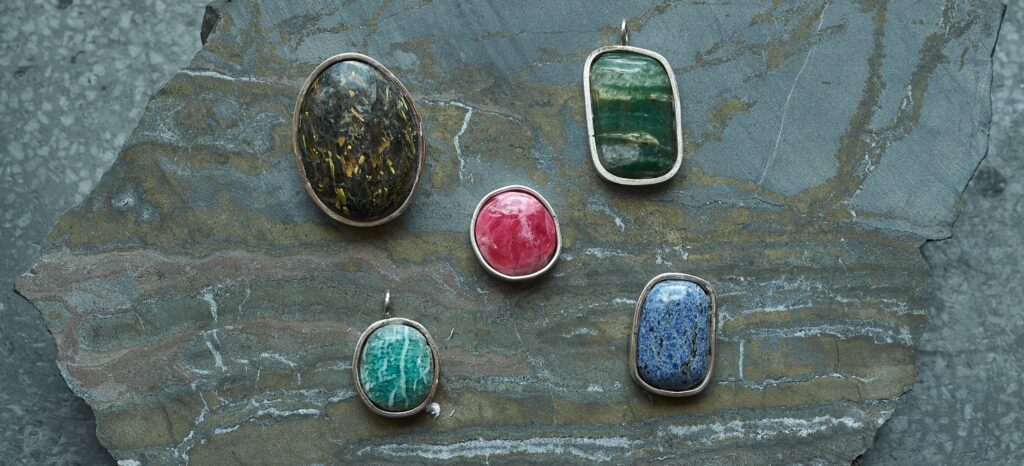
HARTMANN’S, 2021
The most interesting Greenlandic gemstones are ruby and pink sapphire. The deep red to pink colour of the stone is due to a 0,5‑1 % chromium content. Rubies were first found in 1966, but it was not until 2017 that the Aappaluttoq ruby mine opened 150 km south of Nuuk. The raw stones are exported to Asia, where they are cut. The Government of Greenland receives a royalty of 5,4 % of the sales price. The rubies formed deep in the Earth’s crust 2.7 billion years ago.
As the first place in the world, the pink tugtupite was found in 1957 in the 1.1 billion-year-old Ilimassaq intrusion near Narsaq. It is often referred to as Greenland’s national gemstone.
Greenlandite is a variety of quartz with the gemmological name aventurine quartz. The green colour is created by microscopic grains of the chromium-containing mineral fuchsite. The stones can be found in the 3.7 billion-year-old Isua area, and Greenlandite can thus be described as the world’s oldest gemstone.
Nuummite is an inconspicuous, black, 3 billion-year-old lava rock with two intergrown amphiboles. Only when polished do the stone’s coloured reflections appear in golden and bluish nuances (iridescence).
Lapis Lazuli is known only from the Tupertalik site near Maniitsoq in the 1.8 billion-year-old volcanic rock carbonatite. The mineral has been a coveted gemstone since ancient times. The Greenlandic stone has a less intense blue colour than the classic azure stones from Afghanistan.
Other Greenlandic gemstones include amazonite, Greenlandic moonstone, sodalite, agate and other quartz varieties. Ruby and to some extent tugtupite are sold internationally, the others are used for local production of gemstones.
Further reading
- Geology in Greenland
- Industry and labour market
- Self-Government
- The ice-free landscapes
- Visual arts and crafts
Read more about Nature and landscape in Greenland

